
Over the past three decades, there has been a significant 79% rise in new cancer diagnoses among individuals under 50 worldwide. Researchers say there is an urgent call for a global approach to prevention, early detection, and holistic treatment strategies tailored to younger patients.
Global cancer cases in those under 50 surged by 79% over the past 30 years, with breast, windpipe, and prostate cancers leading the rise. The findings call for a global strategy emphasizing prevention, early detection, and tailored treatments for younger patients.
There’s been a striking 79% increase in new cases of cancer among the under 50s around the world over the past three decades (1990-2019), finds research published in the open-access journal BMJ Oncology.
Breast cancer accounted for the highest number of ‘early onset’ cases in this age group in 2019. But cancers of the windpipe (nasopharynx) and prostate have risen the fastest since 1990, the analysis reveals. Cancers exacting the heaviest death toll and compromising health the most among younger adults in 2019 were those of the breast, windpipe, lung, bowel, and stomach.
The findings upend received wisdom about the types of cancers typically affecting the under 50s, a linked editorial suggests.
Global Perspective on Cancer Trends
While cancer tends to be more common in older people, the evidence suggests that cases among the under 50s have been rising in many parts of the world since the 1990s. But most of these studies have focused on regional and national differences; and few have looked at the issue from a global perspective or the risk factors for younger adults, say the researchers.
In a bid to plug these knowledge gaps, they drew on data from the Global Burden of Disease 2019 Study for 29 cancers in 204 countries and regions.
They looked at the incidence (new cases), deaths, health consequences (disability-adjusted life years or DALYs), and contributory risk factors for all those aged 14 to 49 to estimate annual percentage change between 1990 and 2019.
Demographics and Regional Variations
In 2019, new cancer diagnoses among the under 50s totalled 1.82 million, an increase of 79% on the 1990 figure. Overall, breast cancer accounted for the largest number of these cases and associated deaths at 13.7 and 3.5/100,000 of the global population, respectively.
But new cases of early-onset windpipe and prostate cancers rose the fastest between 1990 and 2019, with estimated annual percentage changes of 2.28% and 2.23%, respectively. At the other end of the spectrum, early onset liver cancer fell by an estimated 2.88% every year.
More than 1 million (1.06) under 50s died of cancer in 2019, an increase of just under 28% from the 1990 figure. After cancer of the breast, cancers exacting the highest death toll and subsequent poor health were those of the windpipe, lung, stomach, and bowel, with the steepest increases in deaths among people with kidney or ovarian cancer.
The highest rates of early onset cancers in 2019 were in North America, Australasia, and Western Europe. But low to middle-income countries were also affected, with the highest death rates among the under 50s in Oceania, Eastern Europe, and Central Asia.
And in low to middle-income countries, early-onset cancer had a much greater impact on women than on men, in terms of both deaths and subsequent poor health.
Based on the observed trends for the past three decades, the researchers estimate that the global number of new early onset cancer cases and associated deaths will rise by a further 31% and 21%, respectively, in 2030, with those in their 40s the most at risk.
Potential Causes and Limitations
According to the researchers, genetic factors are likely to have a role. However, diets high in red meat and salt, and low in fruit and milk; alcohol consumption; and tobacco use are the main risk factors underlying the most common cancers among the under 50s, with physical inactivity, excess weight, and high blood sugar contributory factors, the data indicate.
The researchers acknowledge various limitations to their findings: principally, the variable quality of cancer registry data in different countries may have led to under-reporting and under-diagnosis, they suggest. And it’s still not clear to what extent screening and early life exposure to environmental factors may be influencing the observed trends, they add.
But, point out doctors from the Centre for Public Health, Queen’s University Belfast, in a linked editorial: “The findings…challenge perceptions of the type of cancer diagnosed in younger age groups.”
They emphasize: “Full understanding of the reasons driving the observed trends remains elusive, although lifestyle factors are likely contributing, and novel areas of research such as antibiotic usage, the gut microbiome, outdoor air pollution, and early life exposures are being explored.”
They conclude: “Prevention and early detection measures are urgently required, along with identifying optimal treatment strategies for early-onset cancers, which should include a holistic approach addressing the unique supportive care needs of younger patients.”
They add: “There is a pressing need for partnership, collaboration, and resource distribution at a global level in order to achieve these aims.”
Reference: “Global trends in incidence, death, burden and risk factors of early-onset cancer from 1990 to 2019” by Jianhui Zhao, Liying Xu, Jing Sun, Mingyang Song, Lijuan Wang, Shuai Yuan, Yingshuang Zhu, Zhengwei Wan, Susanna Larsson, Konstantinos Tsilidis, Malcolm Dunlop, Harry Campbell, Igor Rudan, Peige Song, Evropi Theodoratou, Kefeng Ding and Xue Li, 5 September 2023, BMJ Oncology.
DOI: 10.1136/bmjonc-2023-000049
Funding: Natural Science Fund for Distinguished Young Scholars of Zhejiang Province; National Nature Science Foundation of China

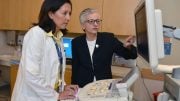
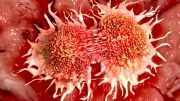
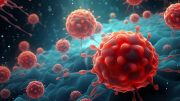
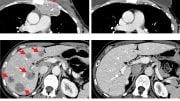

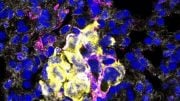


What, no mention of the nano/micro particles of plastic all living things ingest and inhale with every breath and every mouthful?
Another blessing from the oil fields.
Is it merely a coincidence that 30 yeas ago cell phones began to proliferate?
Yes.
Thank you Dave – here to make the same comment. Amazing what a good job FCC has done with hiding research on killing non-ionizing radiation. US limits 10xs that of nearly every other country – and even those countries have it past the level at which it causes cellular damage (.03-.05 and seen at least one person like me who finds this still too high a number – lows which I only see here when I shield. Living in a neighborhood with multiple towers I am getting readings of 4789 M2/MW on a regular basis. So it goes by average, but why then am I having to endure such blasts? Rendering large part of my apartment uninhabitable. I should be able to see these b@#AlarkjkAS. OR FORCE THEM TO LIVE HERE.
Just walk a mile over – where richer people reside – and you will feel none of this – THEY get to have normal, nonkill off levels.
The obvious vector is the one scientists fear__an invading Alien Race that is Purging Human people from the planet.
The hospitals are being used as food processing facilities for the Invaders. So clever until you know what I know.
As Dave said 30 years ago cellphones started to proliferate…. I have said all along its mobile phones causing it…..you cannot spend hours a day with a radio transmitter penetrating your body’s cell with high frequency radio waves and expect nothing to happen!
Radar, xrays, ultrasonics penetrating are ALL radio waves of different frequencies, just because you cannot hear does not mean they are not radio waves…..just different frequencies……and you do not allow xray, radar or ultrasonic to spend hours alongside your body.
You clearly have no idea what a radio wave is. By definition radio is a long wave, with low frequency, below even infrared. Xrays are high frequency (and thus high energy), but they’re blocked by the atmosphere. Ultrasonics aren’t even radio! Since you lack knowledge of even the terms you’re using, please don’t respond to a scientific article as if you know what you’re talking about.
Many studies have now shown that nonionizing radiation is damaging – same as ionizing radiation.
https://icbe-emf.org/activities/webinar-june-14-2023/
FCC troll? Harvard troll?
Wolf goose chase steel pulse
Awesome comment. Everyone needs to take the time to DDG (duckduckgo) ‘the cooking of humanity’ and there is a video posted in 2013. Look in video search and you should be able to watch from there without going to Y T
Takes 3 generations to kill off the fatty US citizens – planned.
Every person born in the last 50 years was born with a load of toxic chemicals in their cells. This together with genetic damage in the womb from radiation and adulterated foodstuffs has increased the frequency and advanced the timing of cancers.